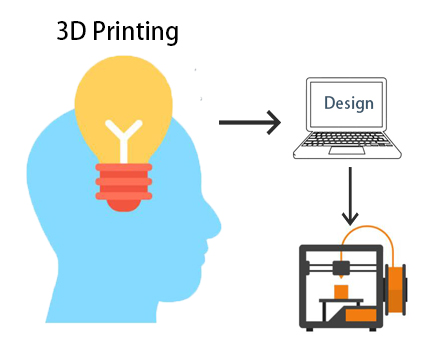The 3D printing technology and the injection mold

The injection molds are one of the foundations of modern industrial development, and with the rapid development of modern technology at current, another technology called 3D printing technology has been widely used all over the world, and it greatly influenced the development of injection molds.
Since the advent of 3D printing technology, the debate on whether 3D printing technology can replace the function of injection molds in the industry has never stopped. On the contrary, during the discussion, we have a clear understanding of the advantages and disadvantages of the injection mold and 3D printing technology in terms of technology and its production, and it allows us to choose the right method to do production by the actual requirements.
The traditional injection molds have more steps and processes in design and manufacture, and one of the characteristics is the longer production cycle. Before the project starts, it takes a long time to perform mold design and mold testing, and it takes several testing to get well-finished plastic products that meet the requirements. This long process brings more obstacles to project promotion and production cycle. In contrast, 3D printing technology has a greater impact on the traditional mold industry in the production cycle. 3D printing technology can complete the process in a few hours, and follow-up modification based on testing greatly shorten the project cycle, also the 3D technology has the advantages of high quality.
3D printing is superior to traditional injection molds on the production cycle, but 3D technology may leave more defects on the surface of the mold, and these defects need to be eliminated by polishing techniques such as machining and grinding, at the same time, this processing has largely extended the production cycle of 3D printed molds. The mold materials used in 3D printing technology are generally photosensitive or thermosetting resins. These plastic molds have a certain hardness in structure, but it is easy to damage under high-temperature condition, that is why the service life of the 3D printing molds is around 100 times only.
If 3D injection molds are used for large-scale production, it means manufacturers need to replace the molds all the time and the time required for assembly and later production is longer, which consumes more labor and resources and extends the production cycle. The traditional mold has a fast speed in the production stage after mold testing, and it will not be affected by the quality of the molds in the beginning, the service life of the injection mold can reach 100,000 times on average.
By the research results, 3D printing technology will not completely replace the traditional molds in the industry currently. 3D printing technology can be used at the tight production cycle and the production of small batches, and the larges-scale production is still based on traditional mold manufacturing, we can combine the advantages of these two different shaping methods to achieve a more effective production process.




